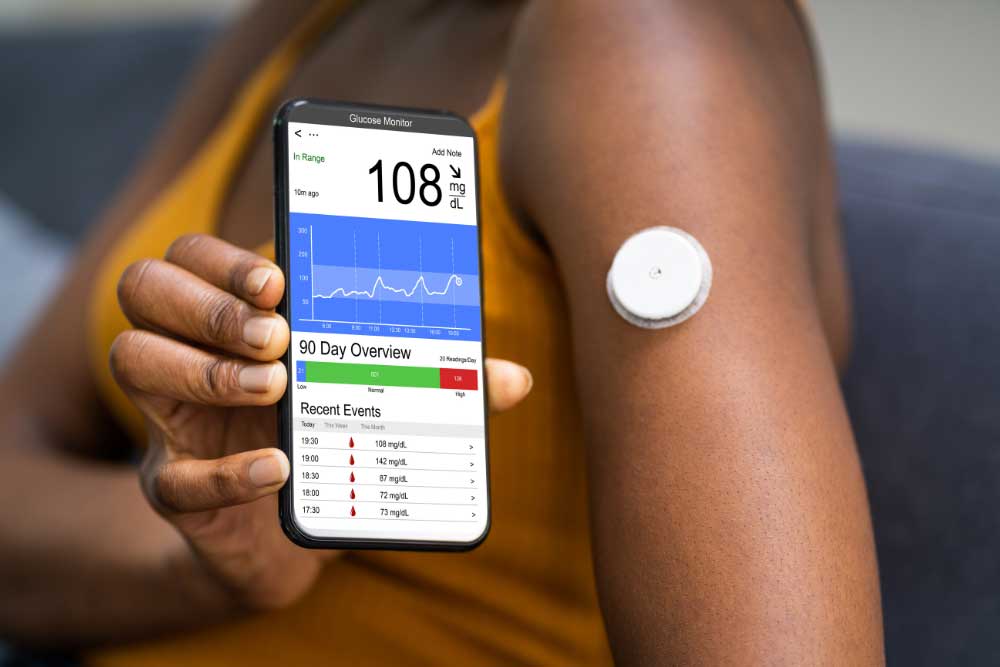
Listen to the article here:
In fifth grade, I learned that mitochondria are the powerhouses of the cell. But what’s the fuel? The answer is carbohydrates. Big carbohydrates are broken down by digestion and converted into a couple of simple sugars. The most abundant of these simple sugars in our bodies is glucose.
Glucose is small, simple, and packed with energy. We transport it through our bloodstream to cells in our body. Glucose levels are regulated by the liver and pancreas. Unfortunately, conditions like diabetes can result in the dysregulation of blood glucose levels. Having too much sugar in the blood is very bad over time. It can result in damage to the eyes, kidneys, nerves, and heart. On the flip side, having low blood sugar can get dangerous right away. Glucose is the fuel that powers our cells, without it the brain and other organs can’t function.
We know that glucose is critical to body function. We also know that glucose levels can get out of control. What can we do to make sure glucose levels stay safe? The most important piece of the puzzle is information. Good information on what our blood glucose levels are is critical to know what to do. We get this information by testing our blood glucose levels. There are three major ways of testing blood glucose; chemical redox reactions, color change, and enzyme-based reactions.
- Chemical redox reaction testing works because glucose reacts with metals. By measuring how the metals react to blood, we can indirectly measure the amount of glucose. Unfortunately, other chemicals in the blood react to metal as well and can complicate the results. This method is rarely used these days.
- The second method is through color change. This method combines blood and a special chemical called o-Toluidine. The o-Toluidine reacts to a specific part of the glucose molecule and changes it to be bright green (normally it is white or colorless). We can measure the color change visually, using test strips or with a digital glucose meter. Color change is cheap and effective, but the o-Toluidine can react to other sugars and give distorted results.
- The industry standard for the last few decades has been enzyme-based reactions. A special enzyme, usually glucose oxidase or glucose dehydrogenase reacts with blood. This enzyme is very specific and only reacts to glucose. A result of this reaction is the production of H2O2, hydrogen peroxide. This is easily measured by digital devices. This method is inexpensive and specific, giving good results.
Now we know the chemical methods of measuring glucose, but how do we actually test our glucose level? Three broad testing types exist: oral, self-test, and continuous glucose monitors. These are differentiated mainly by the frequency and invasiveness of the test.
- Oral tests are a lengthy and (frankly) pretty gross affair. You fast for several hours, then drink an offensively sweet beverage and wait another hour. Blood is drawn and tested to determine how well your body can break down and clear the glucose from the bloodstream.
- Self-tests involve drawing blood and putting it on a strip or in a digital detector. This is quick and can be done many times a day if needed. Unfortunately, repeated pricks can be annoying and you can’t test overnight unless you wake up.
- Continuous glucose monitors (CGMs) are worn like a patch and have a tiny sensor that goes just under the skin into the interstitial space and sends results to an external monitor. This tests blood glucose constantly, typically reporting every 1-5 minutes. CGMs can let people know their glucose via a phone app or external device.
As the old saying goes, knowledge is power! With the help of the latest CGM technology, we are able to see information in real-time such as how food, exercise, and stress impact glucose levels. This helps us take immediate action to manage our glucose levels. So, take action to keep your blood glucose in the healthy range with your new knowledge, a good diet, and consistent exercise. Make sure it stays there by monitoring your blood glucose levels regularly. Keep your eyes open to look for new studies looking at ways to monitor your blood glucose and keep your cells powered up!
Sources:
American Diabetes Association (n.d.). Understanding A1C diagnosis. American Diabetes Association. https://diabetes.org/diabetes/a1c/diagnosis
McMILLIN, J. M. (1990). Blood glucose. Clinical Methods: The History, Physical, and Laboratory Examinations. 3rd edition. Chapter 141. https://www.ncbi.nlm.nih.gov/books/NBK248/
Wang, H. C., & Lee, A. R. (2015). Recent developments in blood glucose sensors. Journal of food and drug analysis, 23(2), 191-200. https://doi.org/10.1016/j.jfda.2014.12.001




